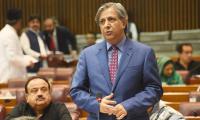It is no secret that Pakistan faces a major housing shortage. Now, with the PTI government having made housing a priority, it is worth looking at the scale of the challenge it faces in overcoming the housing crisis. To start with, lets look at the numbers. Pakistan faces a shortfall of around 10 million housing units. In order to fill the gap, it needs to build around 700,000 houses every year. The project is likely to cost $17 billion per year. Out of this number, PM Imran Khan has promised the ambitious number of five million low-cost homes for the poor in the next five years. In itself, the question of housing-for-the-poor is not in its absence as much as about the precarious and dilapidated state in which the poorest families reside. As an example, we should consider the fact that almost half of Karachi’s 20 million residents live in slums. Houses are often poorly constructed, neighborhoods are poorly planned and it all still remains illegal on paper – and therefore open to anti-encroachment operations whenever the whim of the government decides to make it an issue. This precariousness is a function of decades of the state abdicating role of ensuring citizens the basic right to shelter.
If anything, the PTI government is continuing this legacy through the mass anti-encroachment campaigns it has undertaken under its watch. Instead of providing people housing, the new government has started its tenure by taking away peoples’ livelihoods and shelter. In itself, this explains the many contradictions of the PTI’s attempt to appear pro-people, while being committed to a pro-market economic agenda. Its housing programme, while scant on details, is focused on creating low-income housing through the private sector. One could argue that this in itself is a recipe for disaster. The reality is that the informal private sector has delivered, but this has been mostly through self-help. Informal actors use government connections to secure land for an informal housing scheme. People buy the land and build housing on their own.
One would hope that the PTI will not claim such housing to be a product of its own efforts at providing housing. Instead, it will need to ensure that the houses it wants to provide are planned and livable. Here, the question is how the government entices private sector developers to build livable housing for low-income households. One related question is of housing finance. Most property purchases in Pakistan operate outside the formal banking sector, and there is little dependence on housing loans. Mortgages might be an issue where the government needs to intervene to support the purchase of low-income housing. The government needs to understand these challenges and plan for them.
Every year, millions of girls silently say goodbye to their education and the promise of a better career and get married
Ruling party emerged victorious in by-elections and as per unofficial results has won at least two out of five NA...
According to its organizers, the event now brings together around one billion people across 200 countries every April...
Pakistan’s nuclear programme, it would have threatened peace in the region because of its hegemonic designs
PHF should take comprehensive steps aimed at bringing improvement in the quality of our players
Since its ascent to power in 2014, the BJP, under the leadership of Indian Prime Minister Narendra Modi







